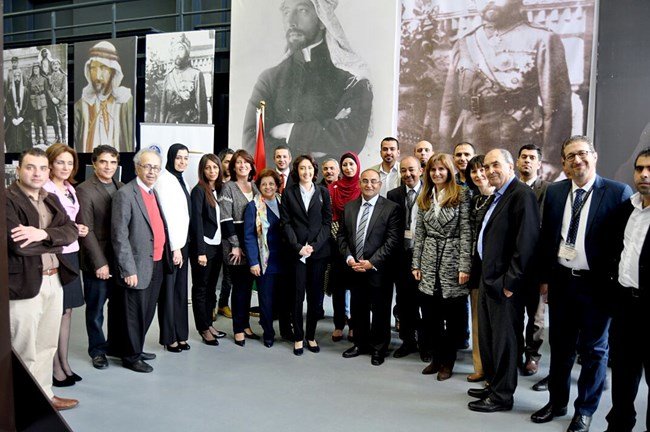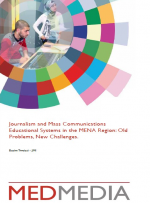Image:

21 Mar 2017
Amman -- Her Royal Highness Princess Rym Ali, founder of the Jordan Media Institute (JMI), today, Tuesday, inaugurated the media exhibition "The World Wakes Up to the Great Arab Revolt." Her Royal Highness Princess Wijdan Hashem attended the inauguration ceremony. The exhibition is organized by the JMI, in cooperation with the U.S. Embassy. It comprises paintings from U.S. and Arabic media sources, some of which are on display for the first time. <br />
<br />
The eight-day exhibition was inaugurated at Ras Al Ain Gallery, in the presence of Alice Wells, the U.S. ambassador to Jordan. It is part of a JMI project to document the press and media legacy of the Great Arab Revolt in the Arabic and Western press. It is also part of the JMI's efforts to document the national media memory. <br />
<br />
The exhibition comprises around 500 portraits in four sections: The collection of the pictures of American journalist and photographer Lowell Thomas (1892-1981) of the Great Arab Revolt, the U.S. press coverage of the events of the Great Arab Revolt, the Great Arab Revolt in the Arabic press, and the emergence of the Jordanian state in the press. <br />
<br />
During the opening ceremony, JMI Dean Dr. Basim Tweissi said that the exhibition was the culmination of efforts that lasted around a year to document the media legacy of the Great Arab Revolt from U.S. and Arabic media sources. It crowned the close cooperation between the JMI and the U.S. Embassy in Amman, thus confirming the deep relations between the two peoples. On this occasion, we thank the U.S. Embassy and the Marist College in New York for all the help they have offered. <br />
<br />
Dr. Tweissi said that the Great Arab Revolt embodied the Arab renaissance movement. The principles and values advocated by it created a state of political moderation, acceptance of human rights, respect for pluralism, and pursuit of the right to self-determination. It raised the slogan of seeking independence and better life. He added that the exhibition was a great opportunity for new generations to see how the world viewed this historic event and the struggle of the Hashemites. At the same time, it confirms the need for a new Arab enlightenment era, inspired by the values and principles of the Great Arab Revolt. <br />
<br />
U.S. Ambassador Alice Wells said that the exhibition contained pictures taken masterfully by American journalist and writer Lowell Thomas. These pictures reflect the nobility and courage of the leaders of the Great Arab Revolt. The exhibition also contains pictures about people, nature, the cultural heritage of Jordan, and some difficulties the region witnessed during that era. <br />
<br />
Wells added that the exhibition reflected the sentiments of the Americans through the way in which the U.S. media covered the struggle of the Arabs for freedom. It confirms the ties between the United States and Jordan during that era. Today, it has become one of the strategic friendships of the United States.<br />
<br />
She stressed that the partnership between the Jordanian and American peoples today was based on common values, most important of which is the belief in tolerance, prosperity, and human dignity. Its aim is to achieve stability in the Middle East, remove extremism, and end the war in Syria. <br />
<br />
Wells concluded her speech by expressing deep thanks to the JMI, which has been an excellent partner in organizing a professional collection of pictures and other relevant items, which are important for Jordanians and Americans and others alike. <br />
<br />



